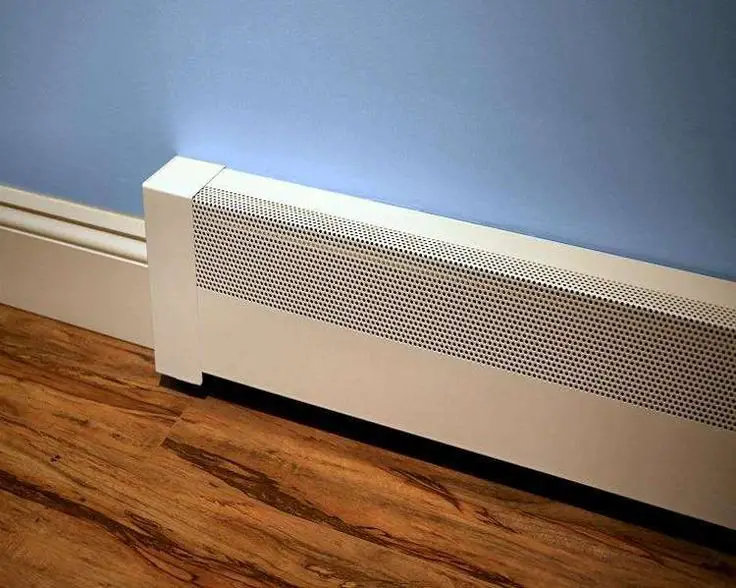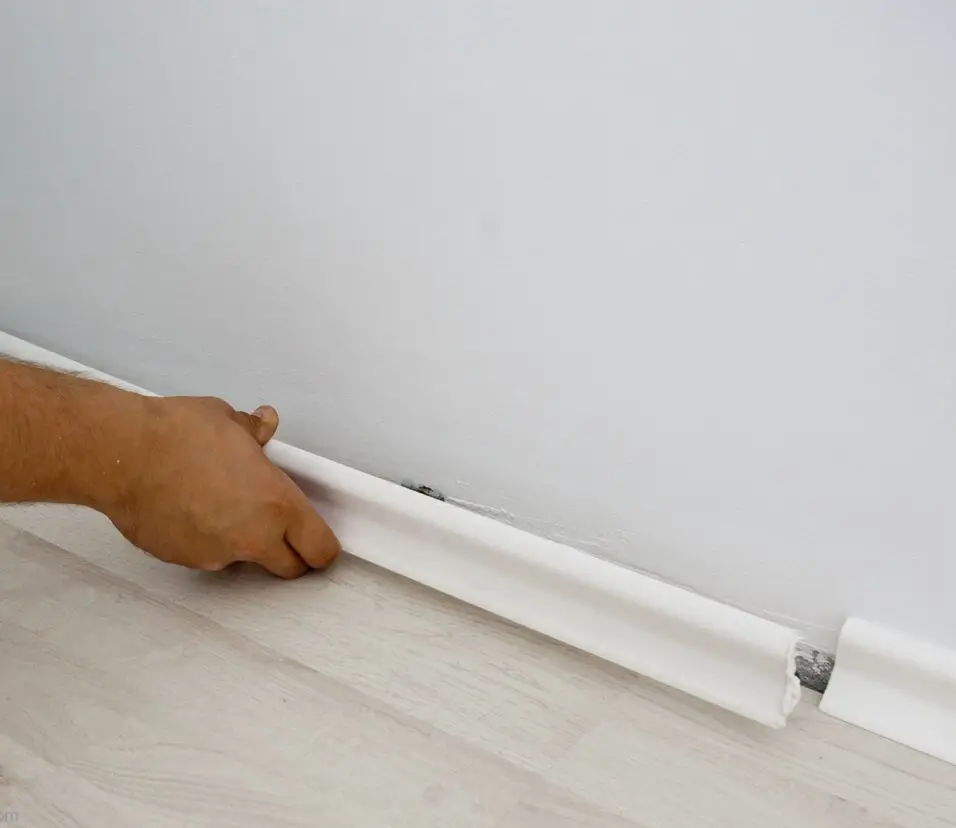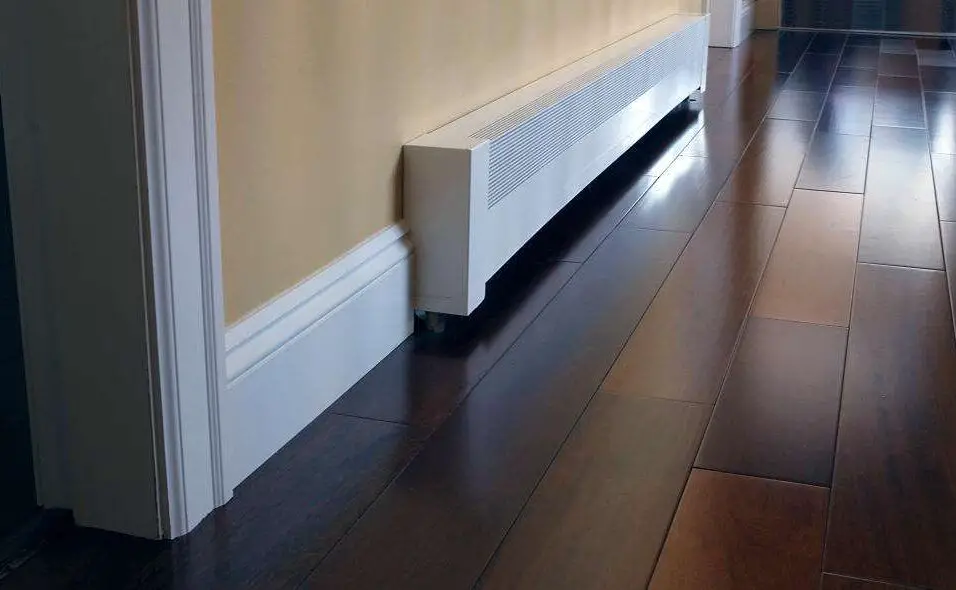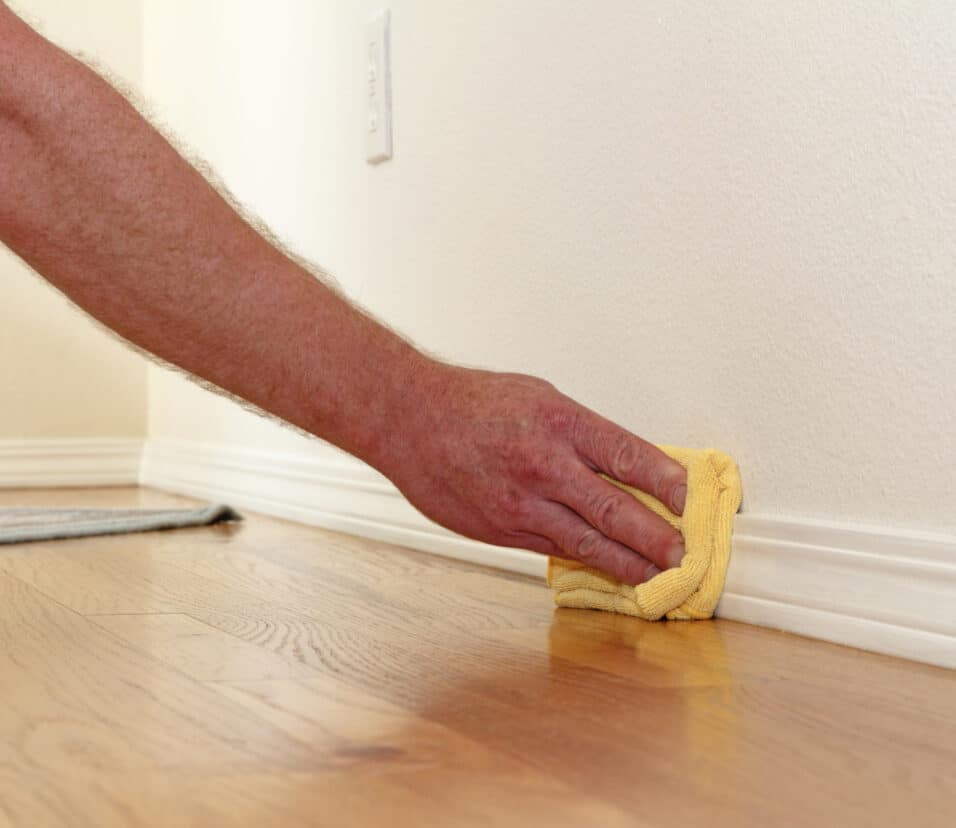Does Baseboard Heat Use Water
Introduction
Does Baseboard Heat Use Water: Baseboard heating is a popular method of heating homes, especially in colder climates. It is known for its efficiency and ability to provide consistent warmth throughout a space. However, many people wonder if baseboard heat uses water as its source of heat. In this article, we will explore the workings of baseboard heating and determine whether or not it relies on water.
Baseboard heating systems work by using electric or hydronic (water-based) heating elements that are installed along the baseboards of a room. These heating elements are typically enclosed in metal or plastic covers, which help to distribute the heat evenly throughout the space. The heat is then radiated into the room, providing a comfortable and cozy environment.
When it comes to determining whether paint baseboard heat uses water, the answer depends on the type of system being used. Electric baseboard heaters, as the name suggests, rely solely on electricity to generate heat. They do not require any water to operate and are therefore a popular choice for homeowners who prefer a simpler heating solution.
On the other hand, hydronic baseboard heaters do use water as their source of heat. These systems work by circulating hot water through a series of pipes that are connected to the baseboard units. The water is heated using a boiler or a water heater, and then pumped through the pipes to provide warmth. Hydronic baseboard heating is often considered more efficient and cost-effective than electric heating, as water has a higher heat capacity and can retain warmth for longer periods of time.
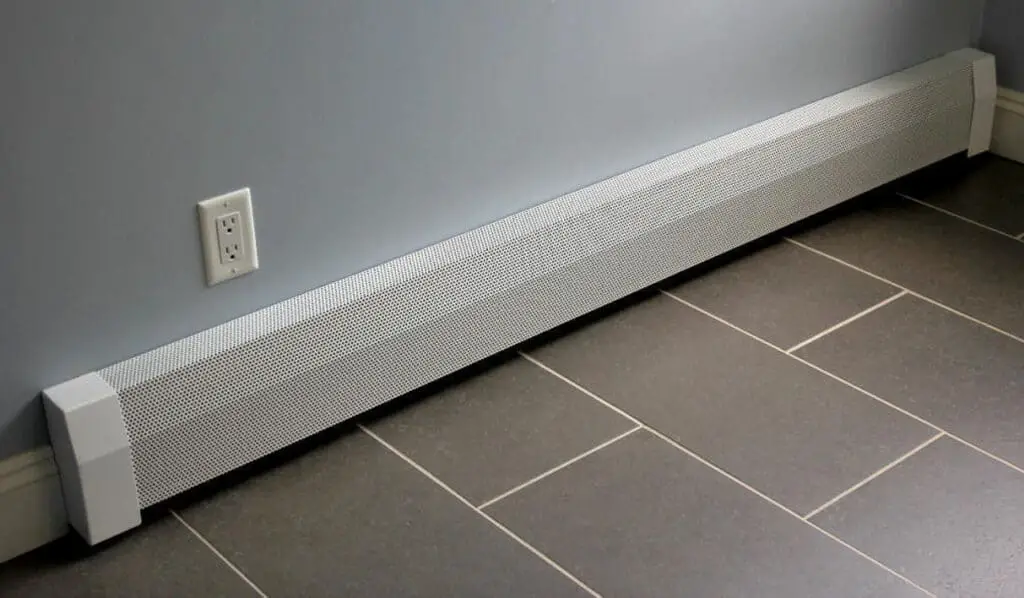
Do all baseboard heaters use water?
Baseboard heaters distribute hot water heat via convection, unlike radiators. Air that gains heat through the baseboard enclosure’s aluminum fins naturally rises into the room.
Baseboard heaters are a popular, cost-effective technique to heat homes and buildings. Water is not used in all baseboard heaters. Baseboard heaters come in several varieties, each with its own heating method.
Electric baseboard heaters are common. They heat with electricity, as the name implies. Electric baseboard heaters use a metal heating element heated by electricity. The room is warmed by the heating element’s heat. Many homeowners choose electric baseboard heaters because they are easy to install and maintain.
Hydronic baseboard heaters exist also. Hydronic baseboard heaters heat with water, unlike electric ones. Hot water flows through these heaters’ pipes. The hot water in the pipes heats the room. Hydronic baseboard heaters are ideal for bigger spaces due to their equal heat delivery.
Besides electric and hydronic baseboard heaters, oil-filled and gas-powered ones are available. Oil-filled baseboard heaters use oil, whereas gas-powered ones use natural gas or propane. These baseboard heaters are rare but may be favored in areas without electricity or water.
Do baseboard heaters use gas or water?
Radiators with baseboards
Water is heated in a basement gas- or oil-fired furnace in baseboard hydronic heating systems. Pipes deliver warm water to room baseboards. Radiation and convection deliver heat. Baseboard heaters require no gas or water. Instead, they heat with electricity. Residential and business establishments use these efficient and effective heaters.
Electric resistance powers baseboard heaters, unlike gas or water heaters. An electric current heats a metal heating element within the heater. When heated, the element emits warmth into the space, maintaining a comfortable temperature.
Easy installation is a benefit of baseboard heaters. They can be wall-mounted or baseboard-mounted, hence the name. This adaptability makes integration into any environment easy. Baseboard heaters also have thermostats to alter the temperature. Other benefits of baseboard heaters include quiet operation. Baseboard heaters are quiet, making them perfect for bedrooms, offices, and other quiet spaces.
Efficiency is another benefit of baseboard heaters. Electric resistance systems generate heat without energy loss through ducting or pipes, unlike gas or water systems. Baseboard heaters directly heat the space, saving energy and money.
Is baseboard heating electric or water?
Hot water baseboard heaters are a better deal than electric baseboard heaters. These floor heaters don’t use power; they use hot water instead. The water gets to the burner through a boiler that keeps the water at a steady temperature.
Your baseboards can be heated with either water or power. The type of floor heating device you have in your home will depend on how heat is made. Hot water or steam is used in water-based baseboard heating to warm the boards. Resistance is used in water-based baseboard heating to do the same thing.
Electric baseboard heating
Electric baseboard heaters are in most homes. Heaters are inside a metal box that is put along the floor of the room in these systems. As electricity runs through the heating elements, they heat up and send heat into the room. For the electric baseboard heating, there is a setting in each room. Having zones for warmth is now possible, and it also saves energy.
In this type of heating, hot water or steam is used to make heat through baseboards. It is also known as hydronic heating. Metal or copper lines are usually run along the floor of a room to make this kind of setup work. Hot water or steam flows through the lines, warming the air around them. Based on the way heat is spread, many people believe that water-based baseboard heating is more relaxing and more energy-efficient than electric baseboard heating.
Water-based baseboard heaters can be powered by gas, oil, electricity, or other fuels. To heat water or make steam, boilers that use gas or oil are often used. The water or steam is then sent through the baseboard lines. An electric heater can also be used to heat the water in a hydronic system. Price, availability, and environmental issues all play a role in the choice of heating source.
How do baseboard heaters work with water?
In the baseboard hydronic heating systems (shown below), a gas- or oil-fired heater in the basement heats water. The hot water is sent to walls in different rooms through pipes. The heat is then sent to the objects through convection and radiation.
Baseboard heaters are a common way to heat homes and businesses, especially in colder places. These heaters warm up the space around them by using water as a method of heat transfer. For the most part, the way that baseboard heaters work with water is pretty straightforward and effective.
A baseboard heater is made up of a group of copper or metal tubes that are filled with water. Usually, these tubes are set up in a zigzag design, which lets the most heat flow through. Depending on the type of heater, the water inside the tubes gets warmer when the heater is turned on.
What liquid is in baseboard heaters?
Because they work well and take up little space, baseboard heaters are a popular way to heat homes and businesses. These heaters are usually put in along the room’s baseboards and are driven by electricity. The liquid that moves around inside baseboard heaters to make heat is one of their most important parts. This liquid, which is called the heat transfer fluid, is very important to how the heater works.
Baseboard heaters usually use a fluid that moves heat that is a mix of water and an antifreeze solution. This mix makes it possible for the fluid to absorb and move heat from the heating device to the air around it effectively. In colder weather, the antifreeze solution helps keep the fluid from freezing. This means that the heater can still work well in the winter.
The main thing that makes up the heat transfer fluid in floor heaters is water. This material is very good at absorbing heat and moving heat from the heating device to the air around it. Baseboard heaters often use water because it is cheap and easy to get. This makes it a popular choice for both home and business use.
Does baseboard heating rely on the circulation of water to generate heat?
Yes, baseboard heating systems do rely on the circulation of water to generate heat. In these systems, hot water is heated in a boiler and then circulated through pipes that run along the baseboards of a room. The hot water transfers its heat to the metal fins of the baseboard unit, which in turn radiates the heat into the room.
This circulation of water is essential for the functioning of baseboard heating systems. Without the continuous flow of hot water, the baseboard units would not be able to generate and distribute heat effectively. The water acts as the medium through which the heat is transferred from the boiler to the baseboard units, ensuring that the room is heated efficiently.
How does baseboard heating differ from other heating systems in terms of its use of water?
Baseboard heating differs from other heating systems in terms of its use of water. Unlike other heating systems that rely on the circulation of water to generate heat, baseboard heating systems use electric resistance heating elements or hot water to provide warmth. In electric baseboard heating systems, electric resistance heating elements are installed inside the baseboard units. When electricity passes through these elements, they heat up and radiate warmth into the room. This method of heating does not require the use of water.
On the other hand, hydronic baseboard heating systems do use water, but in a different way compared to other heating systems. Instead of relying on the circulation of water throughout the entire system, hydronic baseboard heating systems use a closed-loop system. A boiler heats the water, which then flows through pipes to individual baseboard units. The heated water transfers its heat to the baseboard units, which in turn radiate warmth into the room. This localized use of water in hydronic baseboard heating systems makes them different from other heating systems that rely on extensive water circulation.
Are there any alternative methods of heating that do not involve the use of water, as opposed to baseboard heating?
Yes, there are alternative methods of heating that do not rely on the use of water, unlike baseboard heating systems. One such method is electric baseboard heating. Instead of circulating hot water through pipes, electric baseboard heaters use electric resistance coils to generate heat. These coils are located inside the baseboard unit and are heated up when electricity passes through them. The heat is then radiated into the room, providing warmth.
Another alternative method is radiant floor heating. This type of heating system uses electric cables or hot water pipes installed beneath the floor to generate heat. The heat is then transferred to the room through the floor, creating a comfortable and even warmth. Unlike baseboard heating, radiant floor heating does not rely on the circulation of water throughout the system.
Overall, while baseboard heating systems primarily rely on the circulation of water to generate heat, there are alternative methods available that do not involve the use of water. Electric baseboard heating and radiant floor heating are two examples of such alternatives, providing efficient and effective heating solutions for different spaces.
Can baseboard heating systems be modified to use a different heat source instead of water?
Yes, baseboard heating systems can be modified to use a different heat source instead of water. While water is the primary source of heat used in traditional baseboard heating systems, there are alternative options available that can provide heat without the need for water circulation.
One such alternative is electric baseboard heating. Electric baseboard heaters use electric resistance to generate heat, eliminating the need for water altogether. These heaters consist of heating elements that are powered by electricity and produce heat when an electric current passes through them. This type of baseboard heating system is often preferred in areas where water-based systems are not feasible or desired.
Another option is hydronic baseboard heating, which uses a different fluid instead of water. Hydronic systems can be modified to use oil or steam as the heat-carrying medium. Oil-based systems use a heating oil, such as diesel or kerosene, to generate heat, while steam-based systems use steam produced by a boiler. These alternative fluids can be used in baseboard heating systems to provide heat without relying on water circulation.

Conclusion
Baseboard heat does use water as a medium for transferring heat. This type of heating system relies on a boiler to heat the water, which is then circulated through pipes and into baseboard units located along the walls of a room. The heated water transfers its heat to the metal fins of the baseboard unit, which in turn radiates the heat into the room. This process provides a comfortable and efficient way to heat a space.
One of the advantages of baseboard heating is its ability to provide consistent and even heat throughout a room. The water in the system can be easily controlled and adjusted to maintain a desired temperature, ensuring that every corner of the room receives the same level of warmth. This is particularly beneficial in larger spaces or rooms with multiple windows, where other heating systems may struggle to distribute heat evenly.
Baseboard heating may not be the most energy-efficient option available. The process of heating water and circulating it through pipes can consume a significant amount of energy, especially if the system is not properly insulated. Additionally, baseboard heating may take longer to heat up a room compared to other heating systems, which could be a drawback for those seeking quick warmth.
Baseboard heat does use water as a medium for transferring heat. While it offers consistent and even heat distribution, as well as low maintenance requirements, it may not be the most energy-efficient option. Ultimately, the choice of heating system depends on individual preferences, budget, and the specific needs of the space being heated.” Learn about baseboard heating systems and find out if they use water as a heat source. Discover the benefits and functionality of baseboard heat using water.



